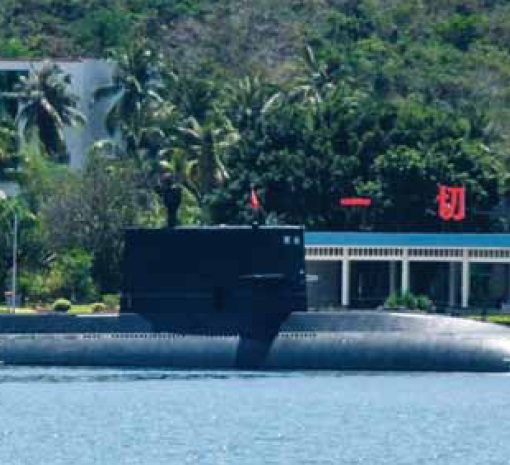By Jeff Gilmour, 25 May 2023
In the 19th century in the first Opium War, the British established a technological advantage by employing steam-powered gunboats. The Scottish shipbuilder, John Laird, built one such gunboat called Nemesis for the British Navy. It was a formidable fighting machine constructed in his shipyard in Liverpool. The ship was 184 feet long and was powered by two 60 horsepower engines. She carried two large 32 pound cannons, five 6 pounders and a Congreve rocket launcher. Laird also divided her hull into watertight compartments to prevent any waterline damage from sinking the ship.[1] In contrast, at that time, China relied on war junks powered by sail and armed with antiquated guns and cannons.
Nemesis left Portsmouth on 28 March 1840 and reached Macao in November, becoming the most powerful warship in the China Sea. Having a draft of just 6 feet, the ship could navigate most Chinese river systems destroying the Chinese junks. For example, in a battle up the Whampoa River, the British ship sank nine junks, demolished five forts, one artillery battery and two military supply posts. The British commander declared the Royal Navy could destroy any defence the Chinese could mount.
In 1841 Nemesis was joined by other British steamships and gunboats, including her sister ship Phlegethon. These two gunboats pounded the imperial Chinese forces into eventual submission. The Chinese government signed a peace treaty at Nanking in August 1842, which opened up the opium trade and other commercial exchanges with Britain, making it the dominant political power in the region.
Li Hongzhang, a scholar-official, helped establish China’s first modern arsenal and shipyard in Shanghai in 1865. He predicted that if China systematically studied western technology, it could be self-sufficient after a hundred years.[2] Li’s dream is now within reach. China’s navy surpassed the US Navy in size around 2020. China’s military defence has risen by an average of over nine percent a year since its leaders launched an ambitious military modernization program in the late 1990s. The People’s Liberation Army Navy (PLAN) has about 340 ‘battle-ready’ ships which now include three carriers, plus submarines, frigates and destroyers. It is estimated that this figure could reach 400 by 2025 and 440 by 2030. These new ships will include a dozen or more large amphibious vessels.[3]
One of China’s advantages, as noted in an article entitled “Of battleships and displacement,” published in The Economist in May 2023, is its vast shipbuilding industry, which is the world’s largest, accounting for 44 percent of commercial ships produced worldwide in 2021. The China State Shipbuilding Corporation (CSSC) produces most of China’s naval ships in the same shipyards as commercial vessels. The CSSC-owned shipyard in Jiangnan completed building China’s third aircraft carrier in 2022.
The Chinese Navy no longer confines itself to the China Sea but now operates in international waters including the Indian Ocean. It operates out of the naval base in Djibouti in eastern Africa and in April 2023, the PLAN evacuated Chinese citizens from Sudan. China’s navy has grown in the past two decades from a small coastal force to a large modern and powerful fighting force operating globally. It can conduct missions far from Chinese shores and must now be recognized and given due regard by other states around the world.
Notes
[1] A. Herman “How the Scots Invented the Modern World,” Three Rivers press, 2001, p. 361.
[2] The Economist, “Of battleships and displacement,” 13 May 2023, p. 16.
[3] Estimates from the Centre for Strategic and Budgetary Assessments (CSBA) an American think-tank.





One thought on “The Rise of the Chinese Navy”
Hello,
The key point is “One of China’s advantages…is its vast shipbuilding industry, which is the world’s largest, accounting for 44 percent of commercial ships produced worldwide in 2021”. It is not just an advantage, but a requirement. Armed forces are a reflection and extension of national capability, so a country with the commercial capability and capacity to build so much can easily handle building large numbers of armed platforms for the Navy.
I think history shows that national power and dominance track very closely with technological achievement and industrial capability. Charting these factors internationally will clearly show how the balance of power has shifted over the past few decades.
Regards